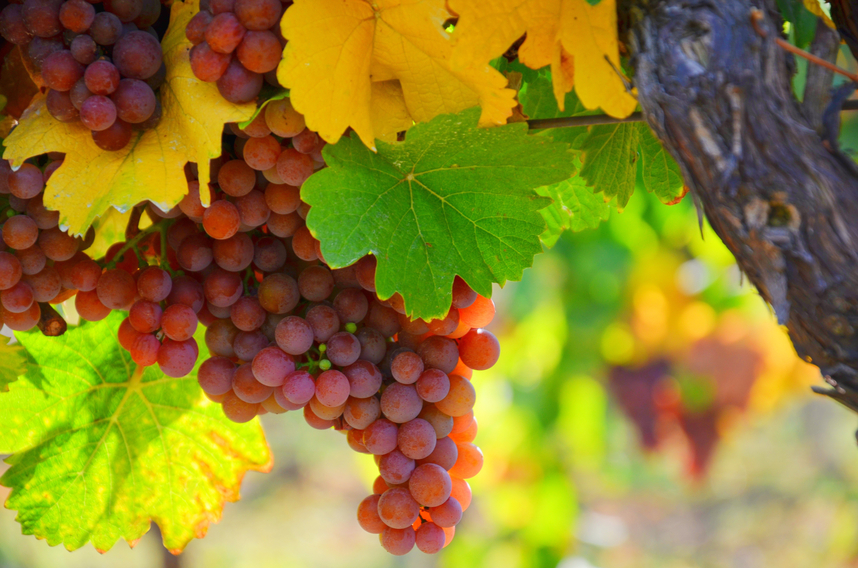Historically disputed by several countries - which proudly claim paternity - the Gewürztraminer grape variety is one of the most cultivated and appreciated in South Tyrol. Thanks to the characteristics of the soils and the cool climate, it produces a white wine with an irresistible sweet, slightly acidic and spicy profile.
Pleasant to savour and to pair on the table, Gewürztraminer can create an excellent taste experience when paired with the right sweet and savoury recipes, especially those with an intense flavour, capable of holding their own!
Gewürztraminer: brief history and origin of the name
Although the name places it around the area of Tramin, in Trentino-Alto Adige (whose German name is Tramin), establishing the origin of Gewürztraminer with certainty is not an easy task, which is why today the paternity of the vine is disputed by various European areas, such as France (especially Alsace) and the Rhine area, where there are ancient varieties with similar characteristics.
Some studies also attribute the etymology of the name Traminer to the German village of Tramin, thus hypothesising a movement of vines from German-speaking countries to Trentino.
Known since the 12th century, Traminer has experienced a discontinuous fame over time, going through a period of decline and a subsequent revival, probably attributable to its evolution.
Originally, in fact, this wine did not possess the typical aromaticity it boasts of today, but a series of genetic mutations on the plants gave rise to grapes with a light pink colour and a pronounced aroma, responsible for the production of a bold and recognisable white wine.
The name by which Traminer is known today is Traminer aromatico or, more commonly, Gewürztraminer (the prefix gewürz, meaning spice), an appellation that first appeared in Alsace in 1870, but soon spread elsewhere to indicate the aromatic version of this Italian white wine, which was so popular that it soon supplanted the classic one.
Production area and organoleptic characteristics of Gewürztraminer

Due to its massive spread, there is no single area where Gewürztraminer is produced. In fact, vine cultivation has reached unexpected areas of the world, such as the United States, South Africa and even Australia and New Zealand.
In Italy, the vines are mainly distributed in Friuli-Venezia Giulia and South Tyrol, in the area between Termeno and Cortaccia (in the province of Bolzano). They have small, pentagonal-shaped leaves and pinkish berries characterised by a thick skin.
The South Tyrolean terroir offers everything the plants need to grow vigorously: predominantly lime and clay soils and a cold climate that allows the grapes to ripen slowly and develop an excellent balance between sweetness and acidity.
In the glass, aromatic Gewürztraminer has a characteristic straw-yellow colour, with slight golden hues. But only with slow tasting is it possible to understand what kind of wine Gewürztraminer is, and to appreciate its fruity and spicy tones, clearly discernible on the nose and palate.
The particularity of this wine lies in its aromatic bouquet, enhanced by exotic aromas of mango, pineapple and lychee, as well as hints of cloves and pepper. On the palate it is sweet and slightly acidic, an irresistible triumph of fruity and floral scents that make Gewürztraminer an easy-drinking wine.
In addition to this version, the Gewürztraminer grape variety is also used to produce an excellent raisin wine - obtained by drying the grapes and characterised by a higher concentration of sugars - and a late harvest version, which is also sweeter and more full-bodied.
Gewürztraminer in the kitchen: how to pair this fragrant wine
Despite its pleasantness to the palate, pairings between Gewürztraminer and food are not so easy to implement. To best enhance its aromatic profile, it must therefore be carefully paired with the right dishes.
Full-bodied and with a higher alcohol content than many other white wines, Gewürztraminer (to be served at a temperature of 10°-12°C for the dry version) prefers intense flavours to delicate ones.
A classic bottle of Gewürztraminer Alto Adige DOC, for example, is therefore an excellent choice to accompany savoury aperitifs, fish and seafood recipes with strong tones and fatty textures, as well as white meats subjected to aromatic preparations, blue cheeses, oriental cuisine and intense ethnic recipes.
This wine is also excellent in combination with spicy flavours - such as those typical of ethnic dishes - that can enhance its full-bodiedness and contrast with its sweet and slightly acidic tones, but it does not disdain pairing with desserts, such as cakes and pastries, especially in its raisin and late version (to be served between 8°-10°C).
The perfect accompaniment to a slice of traditional apple strudel? You could try it with a glass of 'Flora' Gewürztraminer Alto Adige DOC 2020, gritty, sweet and irresistible!
Now that you know all about the Gewürztraminer grape variety, its history and its wines, you just have to discover the best bottles on Svinando!

